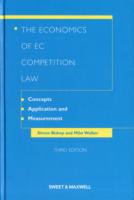- ホーム
- > 洋書
- > 英文書
- > Science / Mathematics
Full Description
Performance-Based Seismic Design of Reinforced Concrete Buildings addresses the critical need for specialized knowledge and advanced techniques to conduct accurate structural response assessments, particularly for buildings in earthquake-prone regions or older edifices not originally designed to withstand seismic forces.
The book focuses on nonlinear analysis models, integrating theory-based principles, contextual specifications, and fully validated experimental data to optimally maintain the integrity of new and existing buildings under variable forces. By systematically outlining state-of-the-art approaches for characterizing and predicting the behavior of key structural components—including beams, columns, beam-column joints, walls, coupling beams, and slab diaphragms—supported by real-world examples and case studies that illustrate their applicability, this essential reference resource makes complex seismic evaluation methodologies accessible to technical readers both in academia and industry. The inclusion of performance-based seismic design strategies is also a prominent highlight, delivering a comprehensive framework for examining and strengthening reinforced concrete buildings against seismic threats.
Originally published by the Architectural Institute of Korea (AIK) and the Korea Concrete Institute (KCI), this volume serves as a national reference for performance-based seismic design. It provides essential insights and employs advanced tools to advance seismic design and retrofit practices, supporting global efforts to enhance long-term resilience in built environment development.
Contents
1. Introduction
2. Nonlinear analysis models
3. Beams
4. Columns
5. Beam-column joints
6. Walls
7. Coupling beam
8. Slab diaphragm
9. Hysteretic models
10. Modeling examples







